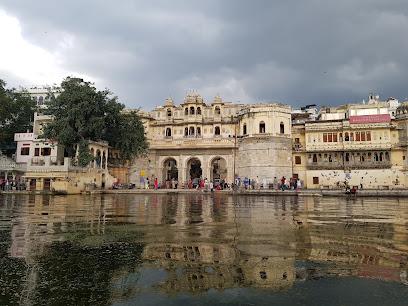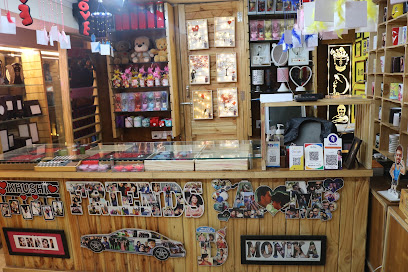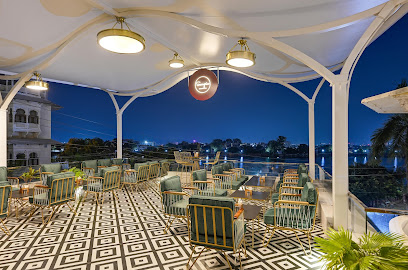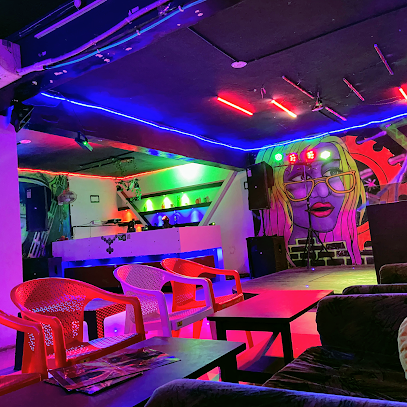
Enchanting Udaipur: The City of Lakes
Explore Udaipur, the City of Lakes, brimming with royal palaces, serene lakes, and vibrant culture. Discover Rajasthan’s jewel with its rich history and breathtaking landscapes.
Nestled in the heart of Rajasthan, Udaipur is a city that exudes romance and beauty. Known as the City of Lakes, it is surrounded by the serene waters of Lake Pichola, Fateh Sagar Lake, and others. The city is adorned with grand palaces, ancient temples, and charming old havelis, making it a perfect destination for history enthusiasts and nature lovers alike. One of the main attractions is the City Palace, a sprawling complex on the banks of Lake Pichola. This architectural marvel offers stunning views of the lake and the city. The palace is a blend of Rajasthani and Mughal architecture, with intricate peacock mosaics and beautiful marble work. Don't miss the chance to visit the nearby Jagdish Temple, an iconic 17th-century temple dedicated to Lord Vishnu. A boat ride on Lake Pichola is a must-do activity. It gives you a unique perspective of the city’s skyline and takes you to the picturesque Jag Mandir and the luxurious Taj Lake Palace, which seems to float on the water. For a panoramic view of Udaipur, head to the Sajjangarh Monsoon Palace, perched high on a hilltop and offering breathtaking sunset views. Udaipur is also a cultural hub, hosting vibrant festivals like the Mewar Festival and the Shilpgram Crafts Fair. The local markets, such as Hathi Pol and Bada Bazaar, are brimming with colorful handicrafts, textiles, and jewelry. Don't forget to savor traditional Rajasthani cuisine, which includes delicacies like Dal Baati Churma and Gatte ki Sabzi. With its rich history, stunning landscapes, and warm hospitality, Udaipur promises an unforgettable travel experience.
Local tips in Udaipur
- Visit the City Palace early in the morning to avoid crowds.
- Plan a boat ride on Lake Pichola during sunset for the best views.
- Wear comfortable walking shoes as the city has many cobbled streets and hills.
- Try local Rajasthani cuisine at traditional eateries for an authentic experience.
- Carry cash as many small shops and markets do not accept cards.
- Hire a local guide to get insights and stories about the historical sites.
Enchanting Udaipur: The City of Lakes
Nestled in the heart of Rajasthan, Udaipur is a city that exudes romance and beauty. Known as the City of Lakes, it is surrounded by the serene waters of Lake Pichola, Fateh Sagar Lake, and others. The city is adorned with grand palaces, ancient temples, and charming old havelis, making it a perfect destination for history enthusiasts and nature lovers alike. One of the main attractions is the City Palace, a sprawling complex on the banks of Lake Pichola. This architectural marvel offers stunning views of the lake and the city. The palace is a blend of Rajasthani and Mughal architecture, with intricate peacock mosaics and beautiful marble work. Don't miss the chance to visit the nearby Jagdish Temple, an iconic 17th-century temple dedicated to Lord Vishnu. A boat ride on Lake Pichola is a must-do activity. It gives you a unique perspective of the city’s skyline and takes you to the picturesque Jag Mandir and the luxurious Taj Lake Palace, which seems to float on the water. For a panoramic view of Udaipur, head to the Sajjangarh Monsoon Palace, perched high on a hilltop and offering breathtaking sunset views. Udaipur is also a cultural hub, hosting vibrant festivals like the Mewar Festival and the Shilpgram Crafts Fair. The local markets, such as Hathi Pol and Bada Bazaar, are brimming with colorful handicrafts, textiles, and jewelry. Don't forget to savor traditional Rajasthani cuisine, which includes delicacies like Dal Baati Churma and Gatte ki Sabzi. With its rich history, stunning landscapes, and warm hospitality, Udaipur promises an unforgettable travel experience.
When is the best time to go to Udaipur?
Iconic landmarks you can’t miss
City Palace
Explore the City Palace in Udaipur, a magnificent blend of history and architecture, set against the backdrop of stunning Lake Pichola.

Wax Museum Udaipur
Discover the enchanting world of lifelike wax figures at the Wax Museum Udaipur, a must-visit cultural attraction in Rajasthan.

Sajjangarh Monsoon Palace
Discover the enchanting Sajjangarh Monsoon Palace in Udaipur, a historical fortress offering stunning views and rich cultural heritage.

Jagdish Temple
Explore the captivating Jagdish Temple in Udaipur, a magnificent Hindu temple showcasing exquisite architecture and spiritual richness in Rajasthan.

Saheliyon ki bari
Discover the tranquil beauty of Saheliyon ki Bari, Udaipur's enchanting garden filled with fountains, flowers, and regal history.

Fateh Sagar Pal
Discover the enchanting beauty of Fateh Sagar Pal, a serene lake in Udaipur, perfect for relaxation, adventure, and cultural experiences.

Maharana Pratap Smarak
Discover the serene beauty and historical significance of Maharana Pratap Smarak in Udaipur, a must-visit memorial park honoring a legendary warrior.

Under The Sun Aquarium, Udaipur
Explore vibrant marine life at Under The Sun Aquarium, a captivating tourist attraction in Udaipur, Rajasthan, showcasing the beauty of underwater ecosystems.

Gangaur Ghat
Explore the beauty and culture of Udaipur at Gangaur Ghat, a historical landmark offering stunning views of Lake Pichola and vibrant local traditions.

Ambrai Ghat
Explore the enchanting Ambrai Ghat in Udaipur, where serene lake views meet rich history, perfect for sunset strolls and memorable moments.

Taj Lake Palace, Udaipur
Discover the lavish Taj Lake Palace in Udaipur, where luxury meets history amidst the stunning backdrop of Lake Pichola.

Jagmandir Island Palace
Experience the royal legacy and breathtaking beauty of Jagmandir Island Palace, a stunning architectural marvel on Lake Pichola.

Navlakha Mahal (Satyarth Prakash Nyas)
Explore the historical and spiritual significance of Navlakha Mahal, a captivating museum and book store in the heart of Udaipur, Rajasthan.

Gulab Bagh
Discover the serene beauty of Gulab Bagh, Udaipur's enchanting garden filled with vibrant flora and rich cultural heritage.

Bagore Ki Haveli
Explore the rich heritage of Rajasthan at Bagore Ki Haveli, a majestic museum and cultural center in Udaipur showcasing royal history and vibrant performances.

Unmissable attractions to see
City Palace
Explore the rich history and stunning architecture of Udaipur's City Palace, a royal heritage site overlooking the picturesque Lake Pichola.

Sajjangarh Monsoon Palace
Discover the splendor of Rajasthan at Sajjangarh Monsoon Palace, where history meets breathtaking views in the heart of Udaipur.

Shrinathji Temple
Discover the spiritual heart of Nathdwara at Shrinathji Temple, a vibrant pilgrimage site dedicated to Lord Krishna, rich in culture and devotion.

Maharana Pratap Museum
Discover the legacy of Maharana Pratap at one of Rajasthan's most captivating museums, showcasing rich history and cultural heritage.

Saheliyon ki bari
Explore the serene beauty of Saheliyon ki Bari, a historic garden in Udaipur, Rajasthan, featuring stunning fountains, lush greenery, and royal charm.

Fateh Sagar Lake
Experience the tranquil allure of Fateh Sagar Lake in Udaipur, where stunning views and serene boat rides await amidst Rajasthan's natural beauty.

Under The Sun Aquarium, Udaipur
Discover the mesmerizing world of marine life at Under The Sun Aquarium, a top tourist attraction in Udaipur, Rajasthan, enriching your travel experience.

Gangaur Ghat
Discover the enchanting Gangaur Ghat in Udaipur, a scenic spot blending history, culture, and breathtaking views of Lake Pichola.

Ambrai Ghat
Explore the historic beauty of Ambrai Ghat in Udaipur, where serene waters meet stunning architecture and vibrant local culture.

Shilpgram
Explore Shilpgram, a crafts village in Udaipur showcasing Rajasthan's rich heritage through art, culture, and vibrant performances.

Jagmandir Island Palace
Explore the enchanting Jagmandir Island Palace in Udaipur, a stunning blend of history, nature, and royal charm on Lake Pichola.

Bhartiya Lok Kala Mandal
Experience the vibrant arts and rich traditions of Rajasthan at Bhartiya Lok Kala Mandal, Udaipur's premier cultural center and museum.

Karni Mata Temple, Udaipur
Discover the divine beauty and spiritual serenity of Karni Mata Temple in Udaipur, a must-visit Hindu temple perched on Machla Magra Hill.

Sukhadia Circle Statue
Explore the tranquility of Sukhadia Circle Statue, a picturesque park in Udaipur, perfect for relaxation and cultural immersion.

Sukhadia Circle Statue
Discover the serene beauty of Sukhadia Circle Statue, a picturesque park in Udaipur, surrounded by lush landscapes and rich cultural heritage.

Essential places to dine
Natraj Dining Hall And Restaurant
Experience authentic Rajasthani flavors at Natraj Dining Hall & Restaurant - A culinary gem in Udaipur offering diverse vegetarian delights.

Khamma Ghani Restaurant
Experience the essence of Rajasthani cuisine at Khamma Ghani Restaurant - where tradition meets flavor in Udaipur.

1559 AD
Discover exquisite fine dining at 1559 AD near Fateh Sagar Lake in Udaipur – where tradition meets modern culinary artistry.

Restaurant Harigarh
Discover the exquisite flavors of India and beyond at Restaurant Harigarh - Udaipur's must-visit culinary destination offering diverse dining experiences.

Krishna Dal Bati Restro
Experience the rich flavors of Rajasthan at Krishna Dal Bati Restro, offering authentic vegetarian cuisine in the heart of Udaipur.

Jhumar Restaurant
Discover delightful Indian and Continental cuisine at Jhumar Restaurant near Fateh Sagar Lake in Udaipur - perfect for families!

Tribute Restaurant
Experience the finest flavors of India at Tribute Restaurant in Udaipur – where tradition meets taste.

Rootage Restaurant And Bar Lounge
Discover exquisite fine dining at Rootage Restaurant And Bar Lounge in Udaipur—where diverse cuisines meet vibrant nightlife.

Sun N Moon Cafe & Restaurant
Experience the fusion of stunning views and exquisite flavors at Sun N Moon Cafe & Restaurant in Udaipur.

Yummy Yoga Rooftop Restaurant
Discover healthy dining at Yummy Yoga Rooftop Restaurant in Udaipur—where delicious vegetarian food meets stunning rooftop views.

Upre
Experience exquisite Indian cuisine at Upre while enjoying breathtaking views over Lake Pichola in the heart of Udaipur.

Purohit Cafe .. A South Indian Food Joint.
Discover authentic South Indian flavors at Purohit Cafe in Udaipur—your go-to spot for delicious vegetarian delights.

Rainbow Restaurant
Experience the vibrant flavors of India at Rainbow Restaurant in Udaipur - where tradition meets modern cuisine.

Ambrai Restaurant
Discover Ambrai Restaurant in Udaipur – where exquisite Indian cuisine meets breathtaking views of Lake Pichola.

Raaj Bagh Restaurant by Fateh Collection
Experience fine dining at Raaj Bagh Restaurant in Udaipur, where exquisite flavors meet breathtaking lakeside views.

Markets, malls and hidden boutiques
Sona Photo Gifts - Best Gift Shop/Photo Print Shop/T-Shirt Printing Shop/Photo Frame Shop/Customized Gift Shop
Discover unique personalized gifts and keepsakes at Sona Photo Gifts in Udaipur, where creativity meets quality craftsmanship.

Novelty NX A Unit of Novelty store - Best Bridal Jewellery in Udaipur best artificial jewellery in udaipur
Explore the finest bridal jewellery and stunning artificial pieces at Novelty NX, Udaipur's top destination for exquisite adornments.

Siparsh Ethnic Wear
Discover authentic ethnic wear at Siparsh Ethnic Wear, where tradition meets modern elegance in the heart of Udaipur's Old City.

Siddhi Vinayak Art
Explore Siddhi Vinayak Art in Udaipur for unique handcrafted gifts and a taste of Rajasthan's rich cultural heritage.

Novelty Store
Explore unique crafts and local souvenirs at Udaipur's charming Novelty Store, a treasure trove for every tourist seeking authentic Rajasthani artistry.

Shoppers Stop Udaipur
Discover a world of shopping at Shoppers Stop Udaipur, your go-to destination for fashion, accessories, and exceptional retail experiences.

Paper Scissor Stone Toys Store - Kids Toy Shop
Explore a vibrant toy store in Udaipur, featuring unique toys, games, art supplies, and children's books for endless creative fun.

Umang boutique-best clothing store in udaipur
Explore exquisite designer clothing at Umang Boutique in Udaipur, blending tradition with contemporary fashion for a unique shopping experience.

Sandouk House of Fashion
Explore Sandouk House of Fashion in Udaipur for exquisite traditional and contemporary clothing that captures the essence of Indian craftsmanship.

Royal Art Emporium
Explore the Royal Art Emporium in Udaipur for unique clothing and decor, showcasing the vibrant artistry of Rajasthan's heritage.

Romantic Collection
Explore Udaipur's Romantic Collection Gift Shop for unique souvenirs and local handicrafts that reflect the rich culture of Rajasthan.

Indune - Handicraft Store, Udaipur
Explore Indune in Udaipur for unique handicrafts and authentic souvenirs that celebrate Rajasthan's rich cultural heritage.

Udaipur Haat
Explore Udaipur Haat for unique clothing and handicrafts that reflect the rich culture of Rajasthan, perfect for souvenirs and special gifts.

Sadhna
Discover the artistry of Udaipur at Sadhna, where handcrafted treasures and local craftsmanship come together in a vibrant shopping experience.

Iconic Infinite Fashion Udaipur
Discover the latest fashion trends at Iconic Infinite Fashion Udaipur, a stylish clothing store in the heart of Celebration Mall.

Essential bars & hidden hideouts
Rootage Restaurant And Bar Lounge
Discover the vibrant flavors of Udaipur at Rootage Restaurant And Bar Lounge, where fine dining meets a lively bar experience in a chic ambiance.

Twist Bar & Lounge
Experience the vibrant nightlife of Udaipur at Twist Bar & Lounge, where innovative cocktails and a lively atmosphere await.

The Artist House, Udaipur
Experience the vibrant heart of Udaipur at The Artist House, where comfort meets cultural richness and nightlife thrives.

Hangout The Cocktail Room
Discover the vibrant nightlife at Hangout The Cocktail Room in Udaipur, where exquisite cocktails meet live music in an inviting atmosphere.

Mount View Retreat
Experience breathtaking views and culinary delights at Mount View Retreat, a charming bar and restaurant near Fateh Sagar Lake in Udaipur.

Sangria - An art of Mixology
Discover the art of mixology at Sangria, Udaipur's premier bar offering stunning lake views and expertly crafted cocktails.

AmBar
Experience Udaipur's vibrant nightlife at AmBar, where delightful drinks and a lively atmosphere await every visitor.

TARO Skybar and Lounge
Experience breathtaking views and vibrant nightlife at TARO Skybar and Lounge in Udaipur, where every sip is accompanied by stunning cityscapes.

OTP Bar & Restaurant
Discover the vibrant OTP Bar & Restaurant in Udaipur, where delightful cuisine meets a lively atmosphere, perfect for family outings and nightlife.

Zeno Bistro Lounge | Rooftop Lounge and Club In Udaipur
Discover Zeno Bistro Lounge, a chic rooftop haven in Udaipur, offering exquisite cuisine and breathtaking views for an unforgettable experience.

The Thekka Bar Udaipur - Best Bar in Udaipur
Experience Udaipur's vibrant nightlife at The Thekka Bar, a perfect blend of traditional charm and modern flair, serving delicious food and drinks.

Patiala peg bar and restaurant
Discover the vibrant Patiala Peg Bar and Restaurant in Udaipur, where delicious food meets refreshing drinks in a lively atmosphere.

Golmaal Bar
Discover Golmaal Bar in Udaipur - a lively hotspot for refreshing drinks and vibrant nightlife.

Z27 Bar Management
Experience the exquisite cocktail culture of Udaipur at Z27 Bar Management, a charming venue perfect for relaxation and celebrations.

Bite Of Life Cafe & Lounge
Discover culinary delights at Bite Of Life Cafe & Lounge in Udaipur, where vibrant flavors meet a cozy atmosphere for an unforgettable dining experience.

Local Phrases
-
- Helloनमस्कार
[namaskar] - Goodbyeअलविदा
[alvida] - Yesहां
[haan] - Noनहीं
[nahi] - Please/You're welcomeकृपया
[krupaya] - Thank youधन्यवाद
[dhanyavaad] - Excuse me/Sorryक्षमा कीजिए
[kshama keejiye] - How are you?आप कैसे हैं?
[aap kaise hain?] - Fine. And you?ठीक हूँ। आप?
[thik hoon. aap?] - Do you speak English?क्या आप अंग्रेज़ी बोलते हैं?
[kya aap angrezi bolte hain?] - I don't understandमुझे समझ नहीं आया
[mujhe samajh nahi aaya]
- Helloनमस्कार
-
- I'd like to see the menu, pleaseकृपया मेन्यू दिखाइए
[krupaya menu dikhaiye] - I don't eat meatमैं मांस नहीं खाता
[main maans nahi khaata] - Cheers!चियर्स!
[cheers!] - I would like to pay, pleaseकृपया मैं भुगतान करना चाहूँ
[krupaya main bhugtan karna chaahoon]
- I'd like to see the menu, pleaseकृपया मेन्यू दिखाइए
-
- Help!बचाओ!
[bachao!] - Go away!चले जाओ!
[chale jao!] - Call the Police!पुलिस को बुलाओ!
[police ko bulaao!] - Call a doctor!डॉक्टर को बुलाओ!
[doctor ko bulaao!] - I'm lostमैं खो गया/गई हूँ
[main kho gaya/gayi hoon] - I'm illमुझे बीमारी है
[mujhe bimari hai]
- Help!बचाओ!
-
- I'd like to buy...मैं ... खरीदना चाहता/चाहती हूँ
[main ... khareedna chahta/chahti hoon] - I'm just lookingमैं सिर्फ देख रहा/रही हूँ
[main sirf dekh raha/rahi hoon] - How much is it?यह कितने का है?
[yah kitne ka hai?] - That's too expensiveयह बहुत महंगा है
[yah bahut mahanga hai] - Can you lower the price?क्या आप कीमत कम कर सकते हैं?
[kya aap keemat kam kar sakte hain?]
- I'd like to buy...मैं ... खरीदना चाहता/चाहती हूँ
-
- What time is it?अब कितने बजे हैं?
[ab kitne baje hain?] - It's one o'clockएक बजे हैं
[ek baje hain] - Half past (10)दस बजे तक
[das baje tak] - Morningसुबह
[subah] - Afternoonदोपहर
[dopahar] - Eveningशाम
[shaam] - Yesterdayकल
[kal] - Todayआज
[aaj] - Tomorrowकल
[kal] - 1एक
[ek] - 2दो
[do] - 3तीन
[teen] - 4चार
[chaar] - 5पाँच
[paanch] - 6छः
[chhah] - 7सात
[saat] - 8आठ
[aath] - 9नौ
[nau] - 10दस
[das]
- What time is it?अब कितने बजे हैं?
-
- Where's a/the...?... कहाँ है?
[... kahan hai?] - What's the address?पता क्या है?
[pata kya hai?] - Can you show me (on the map)?क्या आप मुझे दिखा सकते हैं (नक्शे पर)?
[kya aap mujhe dikha sakte hain (naksha par)?] - When's the next (bus)?अगली (बस) कब है?
[agli (bas) kab hai?] - A ticket (to ....)एक टिकट (.... के लिए)
[ek ticket (... ke liye)]
- Where's a/the...?... कहाँ है?
History of Udaipur
-
Udaipur was founded in 1559 by Maharana Udai Singh II as the capital of the Mewar Kingdom. Legend has it that Udai Singh II came across a hermit while hunting in the Aravalli Hills who advised him to establish a city at that spot to ensure prosperity. Following this advice, the city of Udaipur was born, nestled beside the beautiful Lake Pichola.
-
One of the most significant historical events associated with Udaipur is the Battle of Haldighati, fought in 1576. This fierce battle was between Maharana Pratap of Mewar and the Mughal army led by Man Singh I of Amber. Although the battle was indecisive, it is remembered for Maharana Pratap's bravery and the valor of his horse, Chetak.
-
The construction of the magnificent City Palace, which stands on the eastern banks of Lake Pichola, began in 1559 under Maharana Udai Singh II. Over the centuries, subsequent Maharanas added to this architectural marvel, resulting in a sprawling complex that showcases a blend of Rajasthani and Mughal architectural styles. It is one of the largest palace complexes in Rajasthan.
-
Lake Pichola, an artificial freshwater lake, was created in 1362 AD by a Banjara tribesman. The lake and its islands, including Jag Niwas and Jag Mandir, are central to Udaipur's identity. Jag Niwas, now the luxurious Taj Lake Palace, and Jag Mandir, known for its impressive architecture, both have historical significance and have hosted various events and dignitaries over the centuries.
-
During the British Raj, Udaipur maintained its status as a princely state under the suzerainty of the British Crown. The relationship with the British was largely cooperative, and Udaipur saw various modernizations during this period, including the development of infrastructure such as railways and educational institutions.
-
After India gained independence in 1947, Udaipur merged with the Indian Union. The city transitioned from being the capital of the princely state of Mewar to becoming a part of the Indian state of Rajasthan. Despite these changes, Udaipur has retained its royal heritage and continues to be a prominent cultural and tourist hub.
Udaipur Essentials
-
Udaipur is well-connected by air, rail, and road. The Maharana Pratap Airport, located about 22 kilometers from the city center, has regular flights from major Indian cities such as Delhi, Mumbai, and Jaipur. Udaipur Railway Station is well-connected to major cities like Delhi, Jaipur, and Mumbai. For those traveling by road, Udaipur is accessible via National Highway 8, and there are regular bus services from cities like Jaipur, Jodhpur, and Ahmedabad.
-
Within Udaipur, you have several transportation options. Auto-rickshaws are a popular and convenient way to get around. Taxis and app-based cab services like Uber and Ola are also available. For a more local experience, you can hire a bicycle or a scooter. Public buses operate within the city, but they can be crowded and less frequent. For shorter distances, walking is an enjoyable way to explore the city's narrow lanes and bustling markets.
-
The official currency in Udaipur is the Indian Rupee (INR). Credit and debit cards are widely accepted in hotels, restaurants, and larger shops. However, it's advisable to carry some cash for smaller establishments and market purchases. ATMs are readily available throughout the city. It is also a good idea to have smaller denominations for convenience.
-
Udaipur is generally considered safe for tourists, but it's important to remain cautious. Avoid walking alone late at night in isolated areas. Keep your belongings secure, especially in crowded places like markets and tourist sites. Be wary of touts and overly friendly strangers offering unsolicited help. Areas around the railway station and bus stands can be hotspots for petty crime targeting tourists.
-
In case of an emergency, dial 100 for police assistance, 101 for fire services, and 102 for medical emergencies. The Maharana Bhupal Government Hospital and several private hospitals provide medical care. Pharmacies are widely available for minor health issues. It's advisable to have travel insurance that covers medical emergencies. Keep a copy of your important documents and local emergency contacts handy.
-
Fashion: Do dress modestly, especially when visiting religious sites. Avoid wearing revealing clothing. Religion: Do respect local customs and traditions. Remove your shoes before entering temples and cover your head if required. Public Transport: Do be respectful and give up your seat to elderly passengers. Don't eat or drink on public transport. Greetings: Do greet people with a 'Namaste' (hands pressed together) or a handshake. A slight bow of the head is also a sign of respect. Eating & Drinking: Do try local delicacies and accept food offerings graciously. Don't refuse hospitality, as it is considered impolite.
-
To experience Udaipur like a local, visit the local markets such as Hathi Pol and Bada Bazaar for traditional Rajasthani crafts and souvenirs. Engage with locals, as they are often friendly and willing to share stories about the city's rich history and culture. Enjoy a boat ride on Lake Pichola for stunning views of the City Palace and Jag Mandir. Don't miss a traditional Rajasthani meal at a local eatery, and try the famous 'dal baati churma'.
Trending Landmark in Udaipur
-
City Palace
-
Wax Museum Udaipur
-
Sajjangarh Monsoon Palace
-
Jagdish Temple
-
Saheliyon ki bari
-
Fateh Sagar Pal
-
Maharana Pratap Smarak
-
Under The Sun Aquarium, Udaipur
-
Gangaur Ghat
-
Ambrai Ghat
-
Taj Lake Palace, Udaipur
-
Jagmandir Island Palace
-
Navlakha Mahal (Satyarth Prakash Nyas)
-
Gulab Bagh
-
Bagore Ki Haveli
Nearby Cities to Udaipur
-
Things To Do in Jodhpur
-
Things To Do in Ahmedabad
-
Things To Do in Pushkar
-
Things To Do in Vadodara
-
Things To Do in Ranthambore
-
Things To Do in Jaipur
-
Things To Do in Jaisalmer
-
Things To Do in Rajkot
-
Things To Do in Bhopal
-
Things To Do in Gwalior
-
Things To Do in Nashik
-
Things To Do in Agra
-
Things To Do in Hyderabad
-
Things To Do in Aurangabad
-
Things To Do in Delhi













